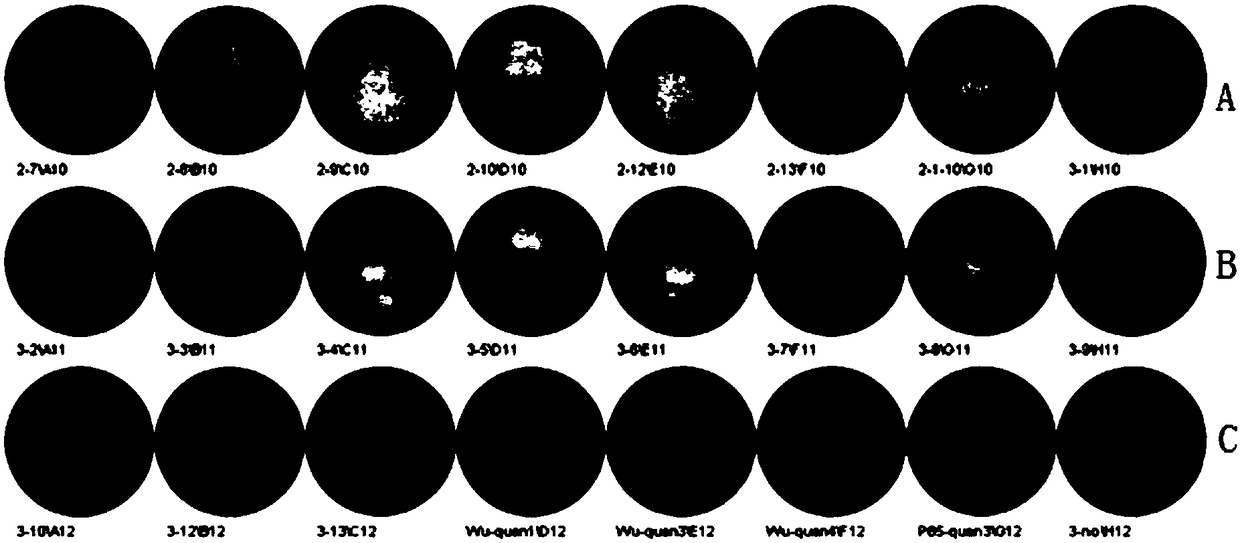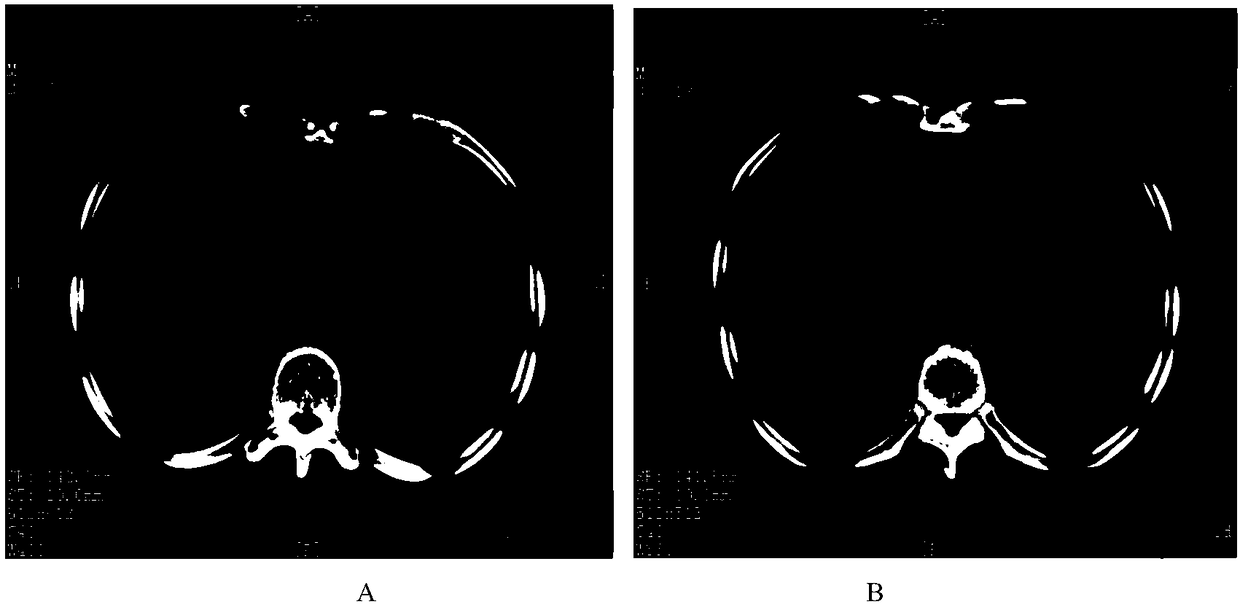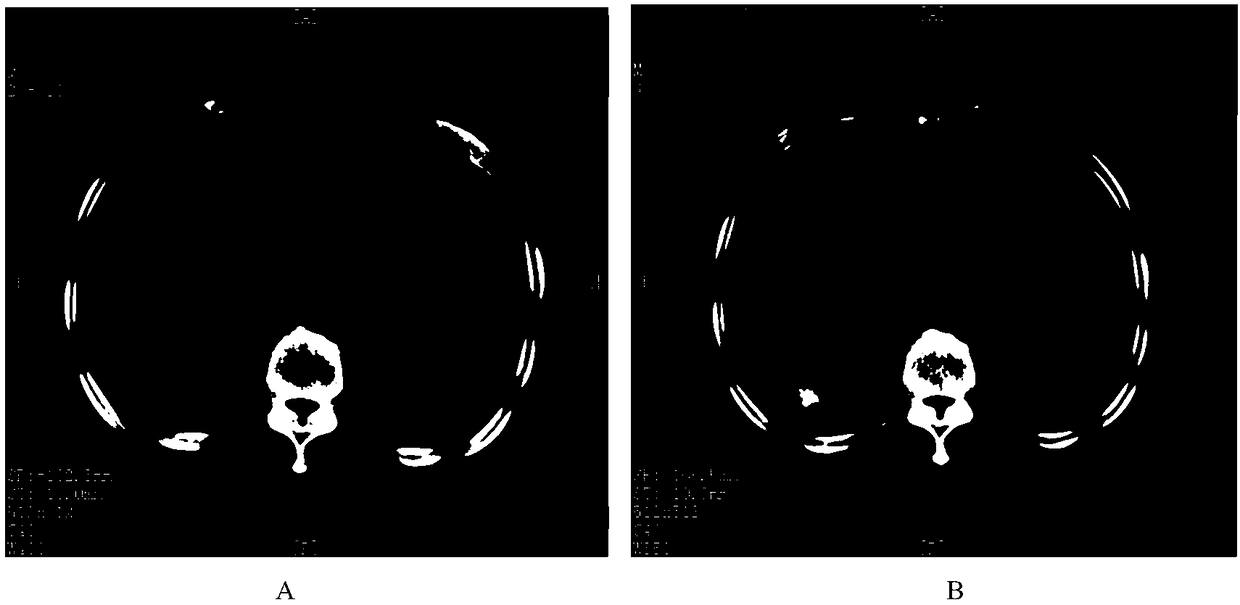Antigenic peptide chain group for treating tumor and application of antigenic peptide chain group in medicine
A technology of antigenic peptides and drugs, applied in the field of malignant tumor bioimmune drugs, can solve problems such as hearing loss, side effects, blurred vision, etc., and achieve the effect of low incidence of side effects, killing tumor cells, and obvious changes
- Summary
- Abstract
- Description
- Claims
- Application Information
AI Technical Summary
Problems solved by technology
Method used
Image
Examples
Embodiment 1
[0026] Patient A, female, 66 years old. Breast cancer lung metastasis, brain metastasis, clinical stage IV, vinorelbine single-agent chemotherapy progressed after 4 times, targeted drug resistance. After multiple metastatic lesions in the lung, a biopsy of the lung lesions was performed. After whole exome sequencing and HLA typing chip detection, the patient carried HER2 (ERBB2) exon 20 insertion mutation, HLA typing was HLA-A: A* 3203A*3201; HLA-B: B*3015B*3102; HLA-C: C*0325C*0512; HLA-DQB1: DQB1*0202DQB1*1122; HLA-DRB1: DRB1*0203DRB1*0401.
[0027] The specific tumor antigen peptide chain SEQ ID No: 1 of the present invention is used for treatment once a week for 12 weeks. Detect the specific CD8+Tetramer+T cell secretion by spot detection before and after injection of the antigen peptide chain group (hereinafter referred to as "drug"), and observe the changes in tumor size 12 weeks before and after the drug by imaging. The results are as follows figure 1 with figure 2 Shown...
Embodiment 2
[0032] Patient B, male, 72 years old, had lung metastases after gastric cancer surgery, received 6 weeks of chemotherapy with oxaliplatin + capecitabine, and then progressed. After intrapulmonary metastasis biopsy for whole exome sequencing and HLA typing chip detection, the patient carries HER2 (ERBB2) exon 20 insertion mutation, HLA typing is HLA-A: A*0301A*3501; HLA-B: B*0201B*3201; HLA-C: C*0333C*0301; HLA-DQB1: DQB1*0301DQB1*0320; HLA-DRB1: DRB1*0323DRB1*1222.
[0033] The antigen peptide chain SEQ ID No: 2 for treating tumors of the present invention is used for combination therapy once a week for 12 weeks.
[0034] Changes in the size of lung metastases before and after treatment such as image 3 Shown by image 3 It can be seen that before treatment, the size of the right lung tumor is 4cm×5cm ( image 3 -A); 12 weeks after treatment, the right lung tumor basically disappeared ( image 3 -B) The tumor is significantly reduced and the density becomes lighter than before ...
Embodiment 3-101
[0036] Example 3-101 Different types and different levels of cancer patients were selected. After whole exome sequencing and HLA typing chip detection, the patients were all patients with HER2 (ERBB2) exon 20 insertion mutation, and they used different antigens. The combination form of peptide chain group is treated once a week for 12 weeks. The HLA*A3101-HVKITDFGRTetramer staining results of Example 3-101 and the changes in lung tumor size before and after treatment are similar to those of Example 1-2. Due to space limitations, the details are not repeated here. The above results all show that the antigen peptide chain group of the present invention can induce tumor dendritic cells, and dendritic cells as antigen presenting cells can present antigen information to T cells, interact with T cells, and make T cells produce It specifically kills tumor cells, plays a role in killing tumor cells, and the effect is obvious.
[0037] During the treatment of Example 1-101, ELISA was use...
PUM
 Login to View More
Login to View More Abstract
Description
Claims
Application Information
 Login to View More
Login to View More - R&D
- Intellectual Property
- Life Sciences
- Materials
- Tech Scout
- Unparalleled Data Quality
- Higher Quality Content
- 60% Fewer Hallucinations
Browse by: Latest US Patents, China's latest patents, Technical Efficacy Thesaurus, Application Domain, Technology Topic, Popular Technical Reports.
© 2025 PatSnap. All rights reserved.Legal|Privacy policy|Modern Slavery Act Transparency Statement|Sitemap|About US| Contact US: help@patsnap.com



